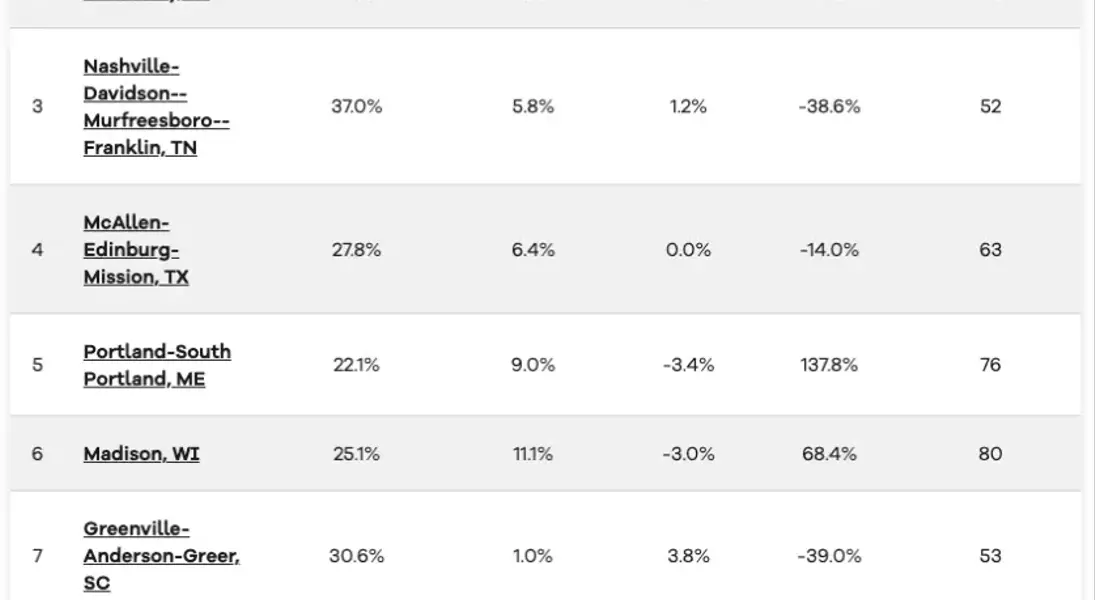
A recent comprehensive analysis by Realtor.com has unveiled the top metropolitan areas across the United States that are at the forefront of new residential construction. This report comes at a crucial time as the nation grapples with an estimated deficit of four million homes. The study meticulously evaluated 100 major metropolitan areas, focusing on several key indicators: the proportion of new homes in listings, their pricing relative to existing properties, potential climate risks, and overall buyer demand.
Fayetteville-Springdale-Rogers, Arkansas, emerged as the leading metro, primarily due to new builds being priced below the median for existing homes and constituting over 40% of available listings. Other notable areas in the top five include Boise, Idaho; Nashville, Tennessee; McAllen, Texas; and Portland, Maine. These cities, particularly Boise, which saw new homes making up more than half of its listings, showcased robust new housing inventories often priced competitively against older residences. Experts note that strong local job markets, significant investment from builders, and improved affordability are converging in these regions, creating fertile ground for new housing opportunities.
The push to address the national housing affordability crisis necessitates increased supply, a goal that requires concerted efforts from local, state, and federal governments. Industry leaders advocate for policies that streamline regulations, promote skilled trades, and eliminate permitting bottlenecks. While the southern U.S. largely dominated the top rankings, mid-sized cities and college towns like Portland, Maine, and Madison, Wisconsin, also featured prominently. These areas, characterized by their relatively lower costs of living, are attracting both new residents and substantial investment from construction companies, ultimately contributing to a healthier and more balanced housing market.
By fostering an environment where communities reduce zoning barriers and support sustainable building practices, we can pave the way for greater affordability, enhanced livability, and long-term resilience in housing. This strategic approach will undoubtedly help bridge the gap between housing supply and demand, offering more families the opportunity to achieve the dream of homeownership.
